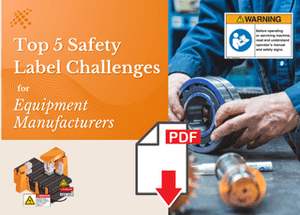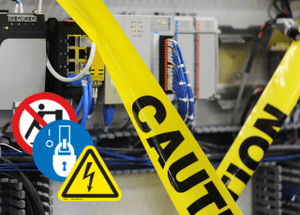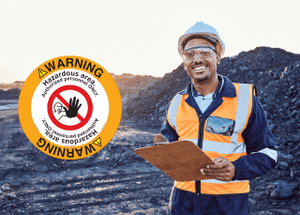Warehouse Safety Tips

The
Essentials of Maintaining Warehouse Safety
Warehouse
workers have a dangerous job, according to the Occupational Safety and Health
Administration, with fatalities from workplace injuries ranking higher than the
national average. A warehouse environment offers many dangers, from slippery
surfaces and fire hazards to incorrectly stacked inventory, equipment failures
and human errors. OSHA notes that top warehouse safety hazards include the
following:
- Slip and fall hazards
- Using forklifts in improper ways
- Not stacking inventory correctly
- Not using sufficient safety equipment for personal protection
- Not following proper procedures for lockout/tagout of equipment
- Inadequate fire safety supplies or equipment
With all of the variables in your work environment and workforce, ensuring warehouse safety is an ongoing process of assessing the dangers and taking steps to maintain a safe environment daily.
Assessing
Warehouse Conditions
Evaluating
your warehouse for potential hazards is the first step to creating a safe
worksite. Are the aisles kept clear of obstructions or are boxes, tools and
other items left in the way? These are all tripping and forklift hazards. Are
there open areas with four feet or more between landings? They should be
blocked off to prevent falls. Do you have cleanup stations to aid employees in
immediately clearing spilled fluids from the floor? All stairs, even those with
only a few steps, should have handrails to prevent falls, and suitable lighting
is vital in helping employees see and avoid hazards.
Another way to increase warehouse safety conditions is to schedule a risk assessment with one of Clarion’s safety experts. Your labels and signs will be evaluated to ensure that they are up-to-date and meet the latest safety requirements.
The
Need for Signs
Signs
make workers aware when they’re nearing hazard areas, such as slippery surfaces
or areas where hard hats are needed.
Signs should be
posted to identify emergency exits, evacuation routes and fire extinguishers,
as well as safety stations with first-aid kits and medical supplies. Labels are
also important in maintaining a clean and safe warehouse environment. Labeling
aisles, bins and crates can help workers find inventory efficiently and avoid
improper stacking and storage, which can lead to accidents and injuries.
Forklift
Safety
Forklift
operations are of great concern, with 100 workers killed and another 95,000
hurt each year, across all industries. Forklift turnovers are the most significant
cause of death. OSHA promotes these
forklift safety
standards:
- Require operators to train and certify in correct use
- Maintain the machine, ensuring parts and tires are in good working order
- Follow weight limits and do not overload the equipment
- Maintain aisles and loading docks to provide safe clearance
You should maintain adequate site ventilation to avoid a dangerous buildup of harmful exhaust gases. Employees should also be made aware of the dangers of carbon monoxide poisoning.
Protective
Equipment
Workers
should know how to use emergency tools, such as fire extinguishers, and wear
protective gear, such as goggles and hardhats. Consider investing in
high-visibility vests or jackets as well. Along with providing adequate fire
extinguishers, be sure to maintain building safety equipment, such as fire
sprinklers, and ensure that sprinklers are free of inventory that is stacked
too high.
Communication
All
workers should receive ongoing training in warehouse safety procedures and
equipment operation, as well as how to wear protective gear. You should have
regular communication with employees about safety issues that arise and daily
updates about what work is occurring in different areas of the warehouse.
Warehouse
Safety Checklist
Here
is a general warehouse safety checklist to help you assess your worksite and
what areas need attention. You may have several specific items to include as
well.
- Emergency exits are clearly marked
- Site includes a backup power source
- Work areas have sufficient lighting
- The warehouse has proper ventilation
- Hand railings are available at every set of stairs
- All exits are free at all times of objects that can impede access
- Fire extinguishers are within easy reach and are marked
- Evacuation maps are posted in various places
- Medical supplies, such as defibrillators, eyewash stations and first-aid kits, are available
- Open areas with four or more feet between landings are blocked by ropes, chains or other means
- Surfaces that are slippery, sharp or hot are clearly marked
- Overhead sprinklers are maintained and unobstructed at all times
- Hazardous materials are clearly labeled, sealed and stored
- Equipment is maintained and inspected regularly
- Machinery is turned off and stored appropriately when not in use
- Weight limits are prominent on all equipment used to transport and store materials
- Worker schedules include breaks, plus time off between shifts
- Employees who operate machinery are trained to satisfactorily use the equipment
- Employees have adequate safety equipment
Any worksite can become hazardous when employees at all levels become lax about following safety procedures. Regular inspections can help everyone keep the focus where it should be—on safety.
Clarion
Safety Systems Offers Important Safety Signs
Using
signs and labels is essential in maintaining warehouse safety and protecting
your business from liability exposure. At Clarion Safety Systems, we can help
you create signs for a variety of needs, from fulfilling OSHA and California
Proposition 65 requirements to marking emergency exits, labeling aisles and
more. Get more information and browse our wide selection of safety signs that
are sure to meet your needs.



